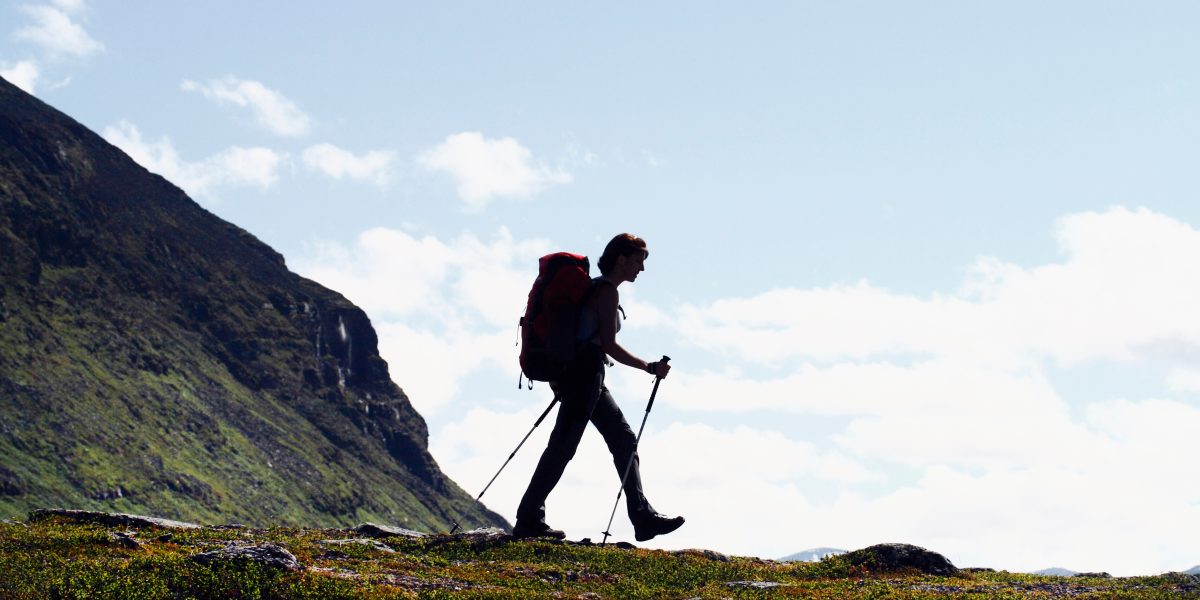Maybe you’ve already spent some time selecting your ideal hiking boots and daypack, but if you take the time to find the best hiking poles for you, they’ll prove themselves to be the real workhorses of your outdoor gear collection. ”Trekking poles take the stress off your ankles, feet, and knees and disperse it across your entire body,” Rhet Eikleberry, the guide and permit manager for Austin Adventures, tells SELF. “They allow you to hike farther, faster, and safer.”
Despite the benefits, you might wonder whether you really need hiking poles if you’re not thru-hiking, carrying a heavy pack, or tackling a difficult, rocky trail. Eikleberry explains that they’re helpful for any hiker, no matter the distance or terrain. “They’re multifaceted and you can use them on any trail—it doesn’t need to be super difficult,” he says. “Backpackers might need them for balance, but you can also use them for short hikes and get there faster with fewer trips and falls. And ultralight backpackers will use them during the day to hike and at night to set up their tent.”
Because of their versatility, hiking poles come in an array of styles to suit any hiker.
What to look for in hiking poles
Whether you want a sturdy set of poles to get your upper body involved in steep ascents or some of the best ultralight poles for your trail running excursions, there are three main components (in addition to your budget) to take into consideration when shopping for trekking poles, Eikleberry says.
Material
Most trekking poles are made of aluminum or carbon fiber. Aluminum poles are heavier, but more durable. “That’s what we use with our customers because they can take the beating,” says Eikleberry. They’re also generally cheaper than carbon fiber hiking poles. However, carbon fiber poles are much lighter, so hikers who are concerned with cutting weight or who intend to stow the poles in their pack during portions of a hike will prefer carbon fiber over aluminum.
Construction
As you’re shopping for trekking poles, you’ll encounter three different designs: First, the most basic models come in one solid piece and are sometimes known as fixed-length poles, which Eikeleberry doesn’t recommend because they’re not adjustable or particularly versatile. You’ll also find telescoping poles, which shrink down into the shaft, and collapsing poles, which break into three sections that are connected by a cord for easy folding and storage. Telescoping poles are a great option for hikers that will be using their poles for the majority of a hike, but want the option to stash them in a pack, while collapsible poles are a bit more stowable, so they’re best for hikers who want to be able to go hands-free for long durations.
Grips and tips
The top and bottom of the poles are also crucial to consider. Pole grips come in a variety of materials. Rubber is the cheapest, but has its limitations: “When you sweat they get a little slippery,” says Eikleberry. Foam grips are slightly better because they wick some moisture away, but cork is likely your best choice, he says. As a grip material, it wicks away sweat and moisture, and offers superior comfort in the hand. Then come the pole tips: Some are rubber, which provide helpful shock absorption on pavement, while others are carbide for precision and grip on loose terrain. You may want to look at the basket attachments, too: The baskets at the bottom of a trekking pole provide flotation in soft surfaces like mud, sand, and soil. Some are designed for use on the trail, while others are large enough to float in the snow.
How to use hiking poles
Although they seem like simple walking sticks, trekking poles take some technical skills to use effectively.
